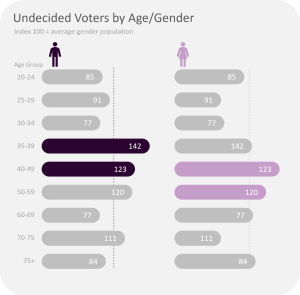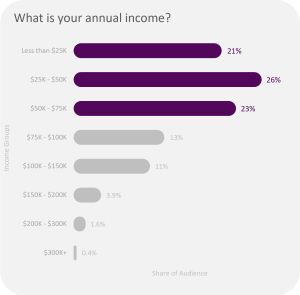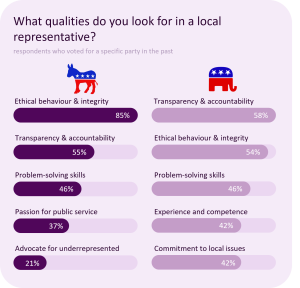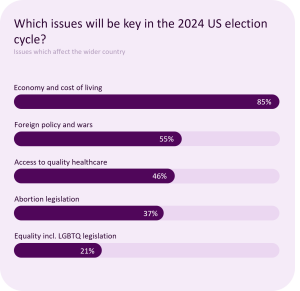With the 2024 US election approaching, and already dominating the news worldwide, Nano surveyed a demographic that will decide the contest: undecided voters in the key swing state of Pennsylvania.
On average, the winning party in this state has aligned with election winners since 1984, particularly in instances where the Democrats have won the race.
In this research summary, we outline key findings around undecided voters for the following factors: who they are, their political views and their media habits.
The results are taken from a representative sample of 670 people.
Undecided Voters – Who Are They?


It’s a widely held belief that voters lean more towards Conservatism as they get older. And sure enough, 35-59 year olds make up 75% of our overall panel, some indication of the prevalence of undecided voters of this age group.
To back this up, L2 Data Mapping’s insights also show that 49% who changed their party allegiance in the past 1-2 years were aged 35-64.
Drilling further into the details of this group, 70% of undecideds have an income below $75k, while 41% are currently unemployed.
Political Views
More than half (56%) of undecideds indicated they had voted for both major parties in the past, suggesting many no longer have lifetime allegiances or identify with a single party, but rather decide election-by-election.
In terms of pressing issues affecting voters’ daily lives, healthcare and infrastructure came out on top, while fully 48% said they preferred candidates who were dedicated to local issues. Younger voters see gun control as a particularly important issue.


Media Consumption
Entertainment and news consumption have both fragmented across devices and channels. Although sometimes we also overstate the extent this is true among the general population.
However, this fragmentation does appear to be the case with undecided voters – 40% saying that they don’t watch broadcast (also known as linear) television. Meanwhile, 54% reading news daily online.
As for connected TV and streaming, 69% said they tune into these channels, with about a third of those (22%) doing so for news.

—–
Please get in touch with our insights team insights@nanointeractive.com for more information, or to request a full copy of the research.






